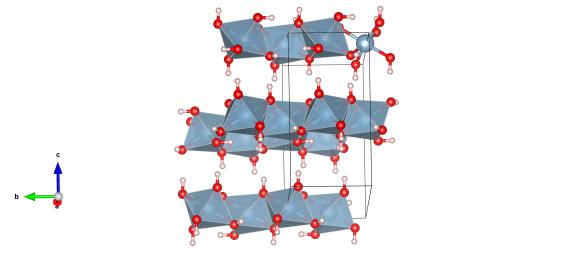Collect enough minerals and someone will name one after you! – Gibbsite
What does it look like?

Image generated by the VESTA (Visualisation for Electronic and STructural analysis) software http://jp-minerals.org/vesta/en/
What is it?
In the late 1700s George Gibbs set out from the US to travel the world and collect minerals. By the time he had finished, and added in some collections from others, he had over 20,000 mineral specimens in a collection in Rhode Island. On his demise, Yale University obtained his collection where it still lives today.
Gibbs later had the distinction to have a mineral named after him, Gibbsite, which is aluminium hydroxide. Its structure is closely related to that of brucite, composed of layers. This means that the mineral itself is soft and easily cleaved along the layered direction.
Where did the structure come from?
The crystal structure of gibbsite was found by Saalfeld and Wedde in 1974 – it can be found in the American Mineralogist Crystal Structure Database.






